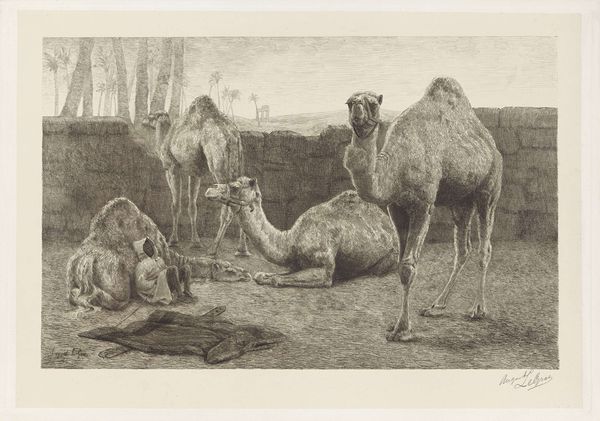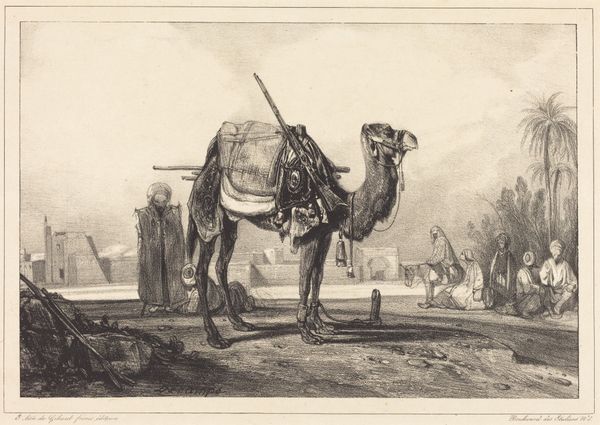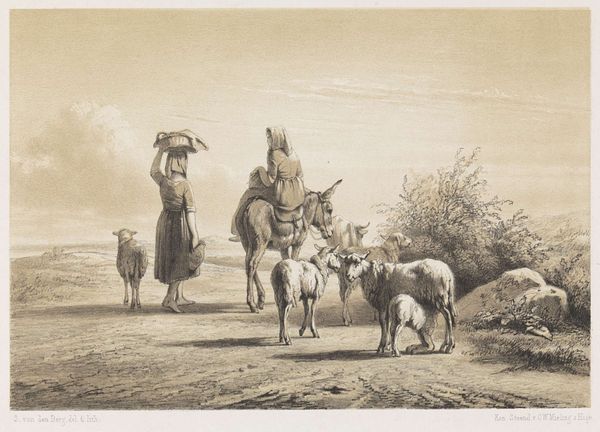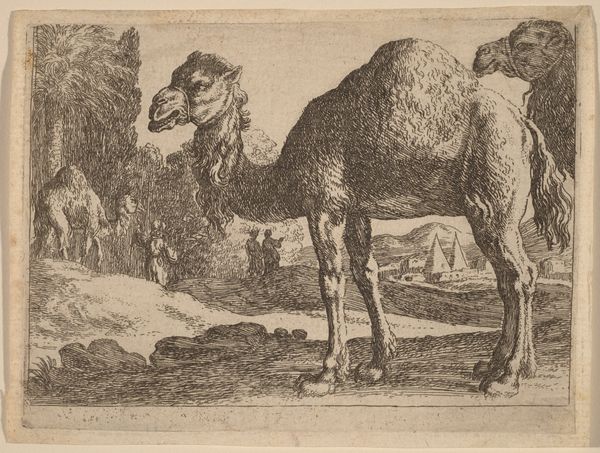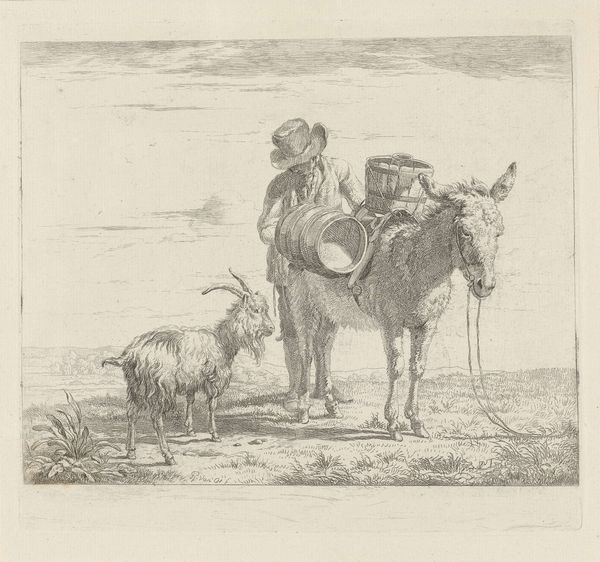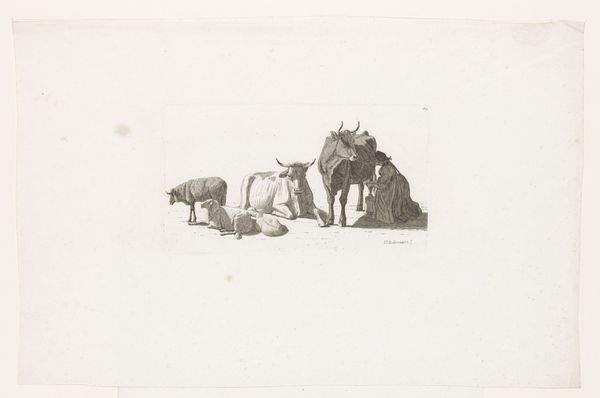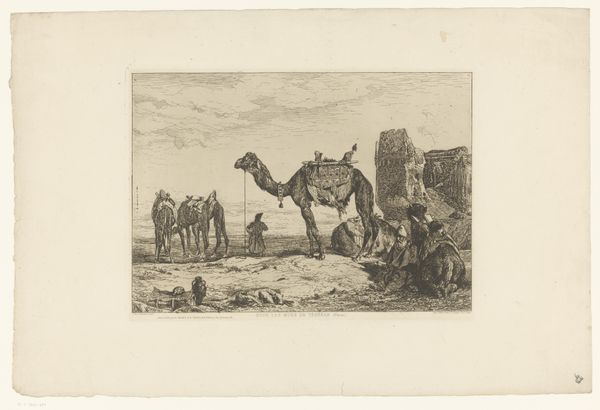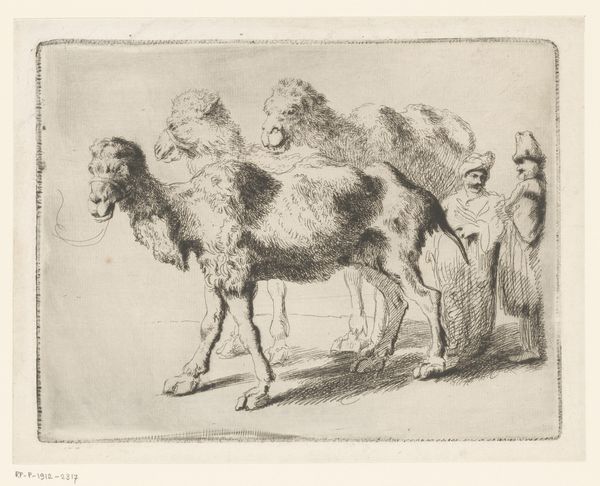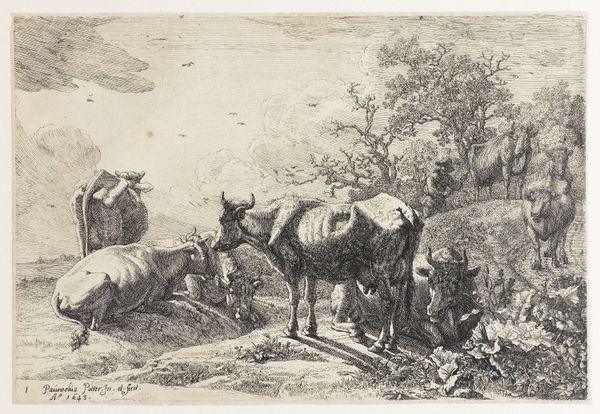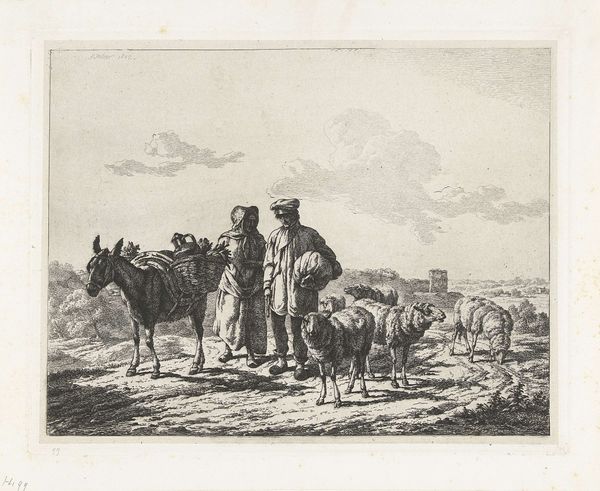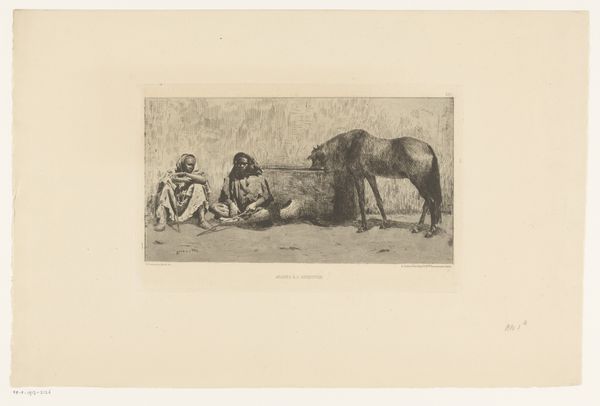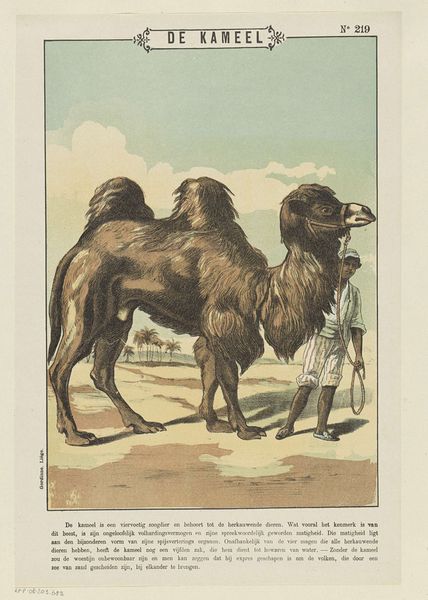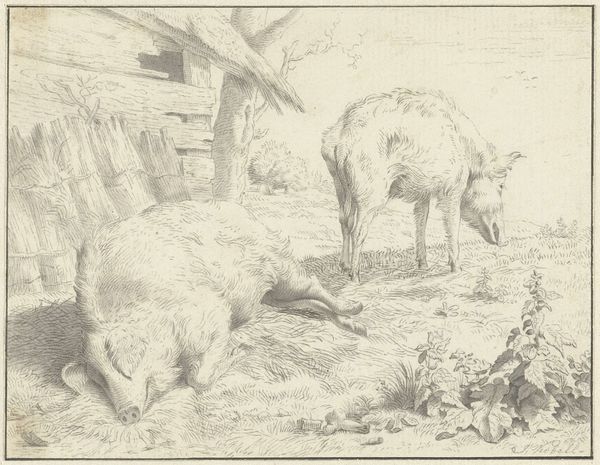
drawing, pencil
#
pencil drawn
#
drawing
#
pencil sketch
#
landscape
#
pencil
#
realism
Dimensions: height 436 mm, width 590 mm
Copyright: Rijks Museum: Open Domain
Curator: Let’s examine "Kamelen," a pencil drawing created by August Le Gras in 1886. Editor: It's captivating. The drawing possesses a tranquil yet melancholic mood. The subdued grey scale makes it feel quite still, suspended somehow. Curator: The work's social context might illuminate those feelings. Consider the role of the camel in North African and Middle Eastern societies. They were beasts of burden and symbols of wealth. Editor: Right, but look at the medium—pencil on paper. It speaks volumes about accessibility and artistic production. Was this study, a preliminary sketch for something larger, or perhaps was its creation driven by purely economic constraints, using the cheapest materials available? Curator: Possibly both! Le Gras would have been working within the European Orientalist tradition. Images of North Africa and the Middle East were circulating widely and there was definitely a commercial element in creating and reproducing images of "the Orient" for European consumers. Editor: The landscape portrayal itself feels restrained—the palm trees, the somewhat coarsely rendered wall, the flat ground, nothing romanticized. Rather it all emphasizes material reality; the rough texture of the camels’ coats, the grain of the stone behind them. Curator: Yes, you're right. He's clearly documenting the physical details, not creating an exotic fantasy. The setting isn’t grand; it’s rather mundane. Look at the sleeping figure near the camel on the ground on the left, this work reminds me of photographic documentation from that era. Editor: Absolutely. This detailed depiction forces us to acknowledge the labor involved, both for the animals and the people who depended on them. A view from the ground, not from the colonizer’s veranda. Curator: Exactly. Le Gras is neither glorifying nor condemning. His ‘Kamelen’ allows us to reflect on that complex history and the social dynamics at play during its creation and reception. Editor: A valuable piece of work because, on closer examination, this drawing serves to ground any Orientalist fantasies. Its stark realism allows us to reconsider the materials of the time in an unfamiliar light.
Comments
No comments
Be the first to comment and join the conversation on the ultimate creative platform.
